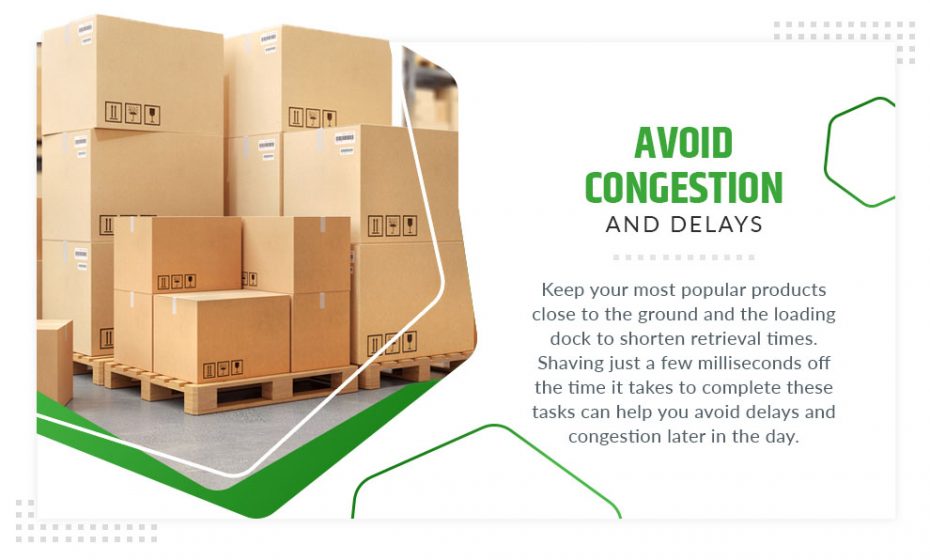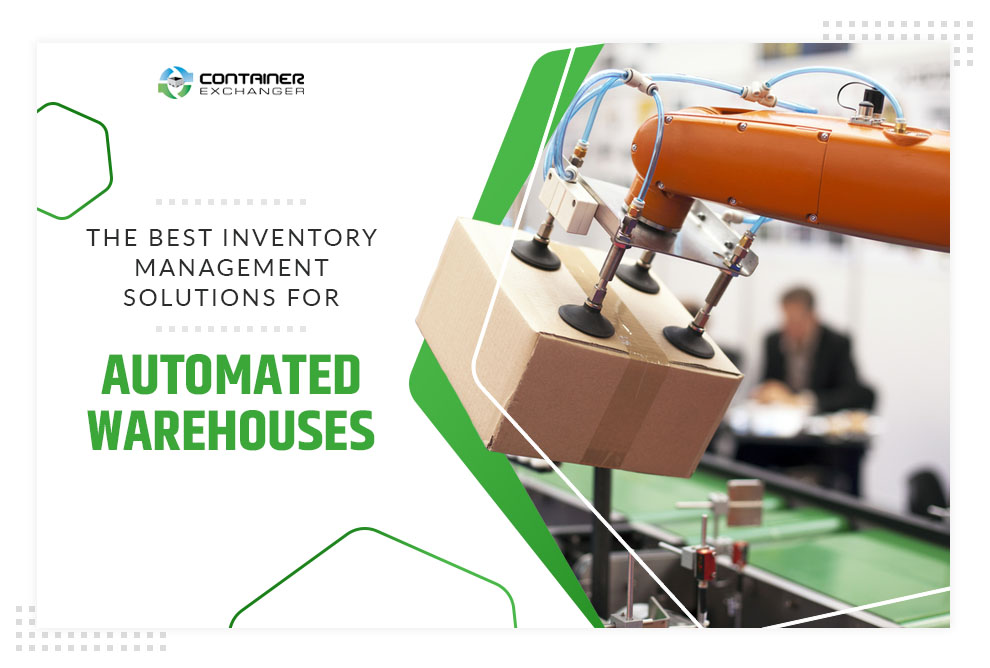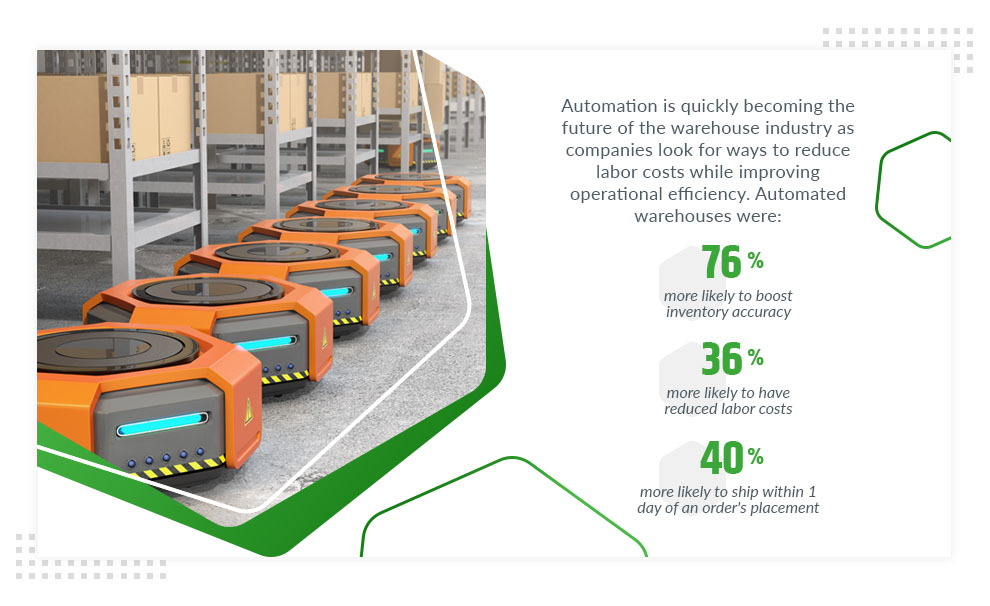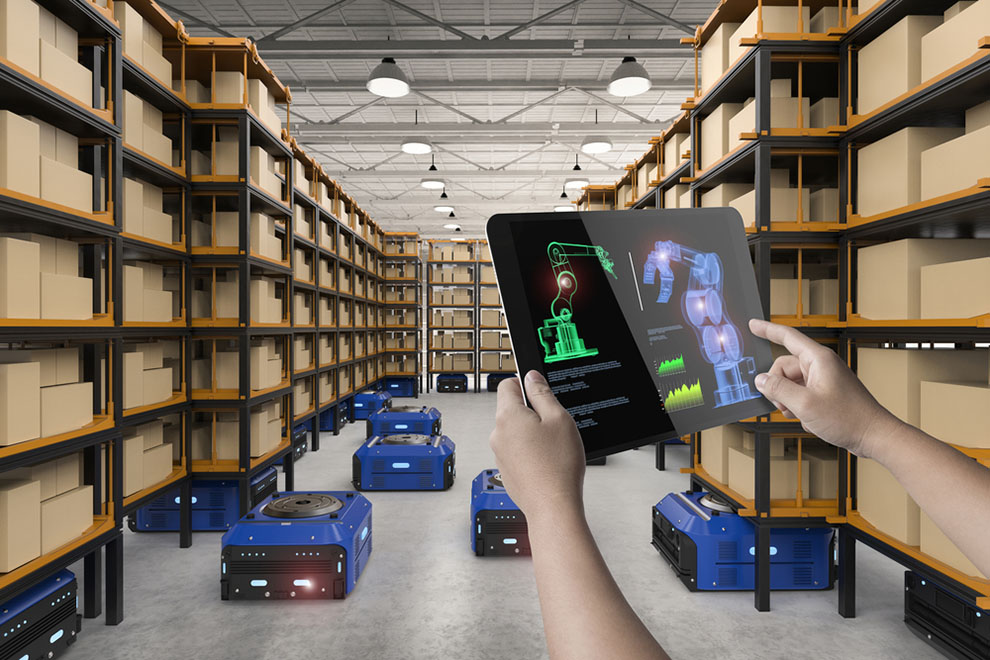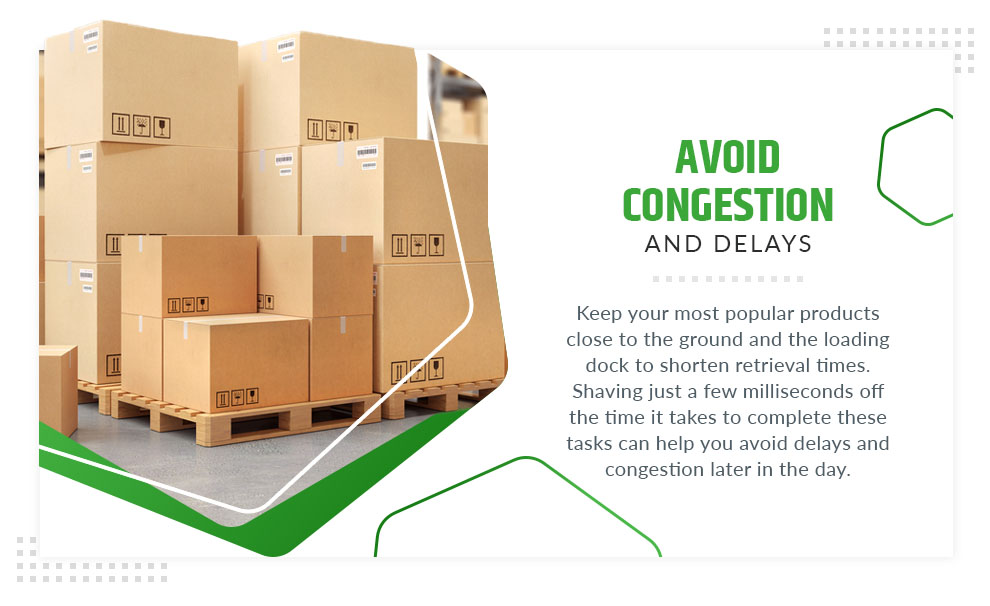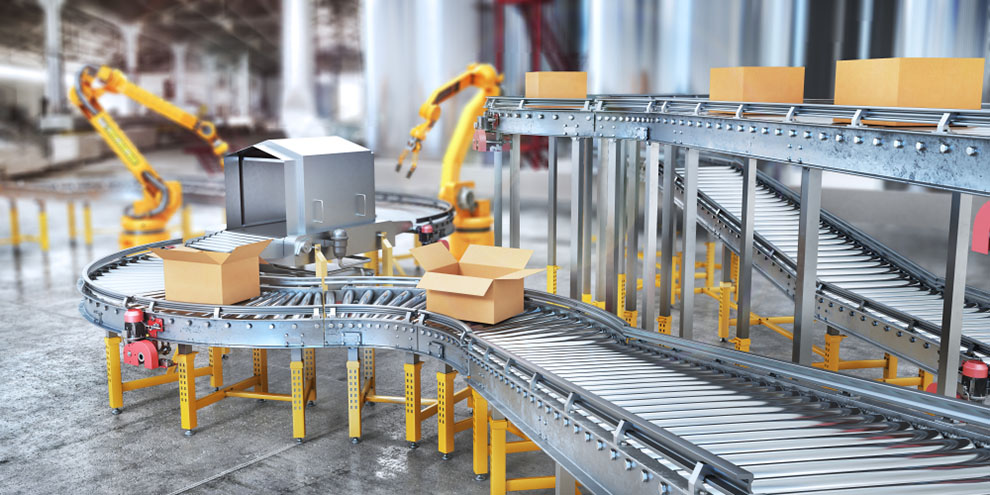Automation is quickly becoming the future of the warehouse industry as companies look for ways to reduce labor costs while improving operational efficiency. According to a survey from Robotics Business Review, automated warehouses were 76 percent more likely to boost inventory accuracy to 99 percent or higher, 36 percent more likely to have reduced labor costs an average of three percent per year and 40 percent more likely to consistently ship within one day of an order’s placement compared to manual warehouses.
Manually picking items and fulfilling orders can be physically challenging as your workers move throughout the space for hours on end. This method also makes your warehouse more susceptible to human error. The wrong item or a late package can derail your reputation overnight.
What Is a Warehouse Management System Anyways? Find Out in Our Guide!
The choice to automate your warehouse is clear, but implementing the latest technology is only part of the solution. Supplement your approach with these inventory management solutions for automated warehouses.
Adopt a Warehouse Management System
In addition to automating the picking, stocking or order fulfillment process, every automated warehouse must use a warehouse management system (WMS). The software should allow you to manage your operations using a single interface. While some automated warehouses move packages like clockwork, the system will help you respond to various issues as they arise.
So, what is a warehouse management system? It’s mostly about transparency. The program will summarize your operations, including existing, upcoming and previous orders so you can go back through your history in a matter of seconds. It will also update the quantities and velocity of your products in real-time. That way, you don’t have to worry about running low on popular items when you need them most.
Ideally, you should be able to interface with your clients, customers or business partners using the warehouse management system. The best programs will sync up with your eCommerce website or customer service team so you can respond to their inquiries without leaving the WMS. From missing products to late orders, you will always have the latest information at your disposal.
If your warehouse is having trouble keeping up with demand or it has yet to be profitable, consider implementing a free WMS. Several programs are free to use up until a certain point. This is a great choice for smaller warehouses and those with just a few hundred SKUs. In some cases, you can upgrade to the premium version for just $30 to $50 a month.
Built-in Automatic Alerts
Investing in a WMS is a great start, but you also need to learn how to make the program work for your business. Utilize the program’s automatic alerts to simplify your role as a manager.
The software will automatically send you a notification or text message if your inventory falls below a certain threshold. You can then reorder more stock before your warehouse runs out. This will help you avoid having to post the dreaded “Out of Stock” sign on your website or calling one of your clients to tell them that the order will be late until you get in some more product. Adjust these thresholds over time. It’s best to strike the right balance between having enough inventory for your customers without overinflating your storage costs.
You can set up automatic alerts if one of your orders is delayed so you can always stay one step ahead of the situation. Use this extra time to coordinate a new route with the carrier or contact the client to come up with a viable alternative.
Stack Racks Help Your Warehouse Stay Organized
The program should also let you track payments. Running a warehouse often means collecting money from dozens, if not hundreds, of different clients and customers. To avoid going in the red, find a WMS that tracks the status of these payments in real-time. If a payment is delayed or missing, you will be the first to know and can rectify the situation as quickly as possible.
Mobile Warehouse Management
In today’s fast-paced world, the warehouse industry never sleeps. Emergencies, delays and product shortfalls can happen at a moment’s notice, so it’s best to have access to this technology outside of the office. Find a WMS with a built-in mobile app for managing your operations on the go. You may not have access to the same interface, but you can still check the status of existing orders and pull up information to share with your clients.
As the owner of the facility, you can’t afford to fall asleep at the wheel. Having a mobile WMS is like having your entire warehouse at your disposal 24/7.
Communication is key when it comes to using a WMS. You may have to coordinate with dozens of business partners, investors and clients on any given day. To keep everyone on the same page, use the automatic report feature to send updates to your co-workers and customers. From daily reports to weekly summaries, you can print off as much or as little information as you need. The program will then automatically send copies of the report to every stakeholder.
Scheduled Equipment Downtime
Despite the latest technological advancements, today’s machines are not foolproof. They can easily break down when you need them most. If you’ve come to depend on automation in recent years, one outage can bring your entire facility to a grinding halt. A broken package fulfillment machine can lead to stacks of unpackaged items piling up on the floor. All the while, you don’t have enough crew members to pick up the slack and it could be days before you get your machines up and running again.
That’s why it’s important to schedule routine equipment maintenance. Plan to repair these machines when the warehouse is relatively quiet. It’s always better to repair your machines before they break down to avoid any service interruptions.
You can even hire a dedicated maintenance professional for making quick repairs on the fly. They can also help coordinate with the manufacturer, so you can upgrade your equipment as time goes on.
Redesigning the Layout
As impressive as the latest warehouse technology may seem, some things are better left to humans. No one is going to redesign the layout of your facility for you. The best solution all depends on your equipment and the needs of your staff.
Avoid getting complacent with the layout of your warehouse. Automated tools and machines should have plenty of room to move throughout the space without putting your products or employees at risk. Tight aisles and corners can lead to congestion, broken packages and unfortunate accidents in the workplace. There should also be plenty of room for your employees to move around. In light of the recent COVID-19 pandemic, your workers may need more room to keep their distance.
Redesigning the space is often about rearranging your storage units. Stack racks tend to be the most common choice. Adjust the placement and position of your racks to improve efficiency. Invest in stack racks and shelving units that make it easy to retrieve your products for less hassle and less risk.
Keep your most popular products close to the ground and the loading dock to shorten retrieval times. Shaving just a few milliseconds off the time it takes to complete these tasks can help you avoid delays and congestion later in the day.
The WMS comes with plenty of useful statistical analysis. Use this feature to monitor how these changes are affecting efficiency. Your goal should be to reduce picking and order fulfillment times while increasing accuracy. Keep an eye on these key performance indicators as time goes on.
Adjusting Your Operations
As you redesign the layout, don’t be afraid to adjust your operations as well. Again, the WMS will always be there to tell you whether you’re heading in the right direction. These tools are designed to help you improve efficiency and reduce costs, but only if you’re willing to make the necessary changes.
You should know roughly how long it will take your team to complete certain tasks, such as loading/unloading shipments, preparing packages for delivery and unpacking new arrivals. Try to increase the speed by making small adjustments along the way.
For example, packing in bulk is always faster than trying to move dozens of individual smaller containers by hand. Use durable industrial bulk storage bins to simplify the loading/unloading process without putting your products at risk. You also won’t have to spend as much money on plastic wrap, cardboard boxes and other disposable products that can chip away at your budget.
Consider changing the order in which your employees complete various steps to improve accuracy and efficiency. Use automatic scanners to double-check their work. Refer to your WMS as you make these changes to see if they are having the right effect.
Manual Quality Assurance
Running an automated warehouse is not the same as having the robots do all the work. Even if your facility is 99 percent automated, there’s still work to be done.
You will need to have your employees conduct spot checks to make sure the numbers in the system are accurate. Strange things can happen in your warehouse, even if the machines are doing everything right. Even a slight inaccuracy can spell big trouble down the line. It may also be a sign that your WMS isn’t syncing up correctly.
Get in the habit of having your workers perform spot checks at the start and end of each day so you can adjust the WMS accordingly. This includes walking up and down the aisles and comparing the number of products on the shelf with those in the system. Your workers should also take this opportunity to inspect your products and storage containers. They should be on the lookout for strange smells, drafts, leaks and other warning signs that your products may be damaged.
When conducting manual spot checks, you can speed up the process by storing your products in industrial wire baskets. Unlike other types of containers, the baskets are completely see-through, making it easy for your workers to quickly count the contents without having to open the lid. Some warehouses contain dozens of similar looking containers which only complicates the process. Your workers will have to either open containers by hand or squint to read the text printed on the shelf, both of which can be time-consuming.
Using wire containers also reduces the number of touchpoints in the warehouse so your workers don’t have to keep touching the same surfaces at the start and end of their shift.
In a perfect world, these spot checks should happen organically. Your workers should watch out for possible product damage and other causes for concern when walking through the space. Transparent wire containers keep everything visible for maximum product protection.
As you can see, the warehouse industry is evolving fast. But managers need to learn that automation is only one part of a solution to a much bigger problem. Setting up an automatic picker and stocker won’t fix everything that’s wrong with your warehouse. Combine the latest technology with cost-effective, common-sense solutions to keep up with demand without inflating your overhead expenses. Automation is known for its scalability, but the way you use this technology may change as your operations grow over time.
Don’t forget to do your research before investing in one of these products. Every warehouse is different. Discuss existing challenges with your team to make sure these upgrades will benefit everyone. Learn more about the implementation of integrated inventory management solutions before committing to a certain piece of technology.
At the end of the day, chasing efficiency and reducing costs are about having access to information in real-time and upgrading your operations over time. Use these tools to streamline every aspect of your warehouse facility.
Image Credits
IAMSUTHICHA/Shutterstock.com
Phonlamai Photo/Shutterstock.com
studiovin/Shutterstock.com
Gorodenkoff/Shutterstock.com
Chesky/Shutterstock.com
SPACE_MICROBE/Shutterstock.com
wellphoto/Shutterstock.com
